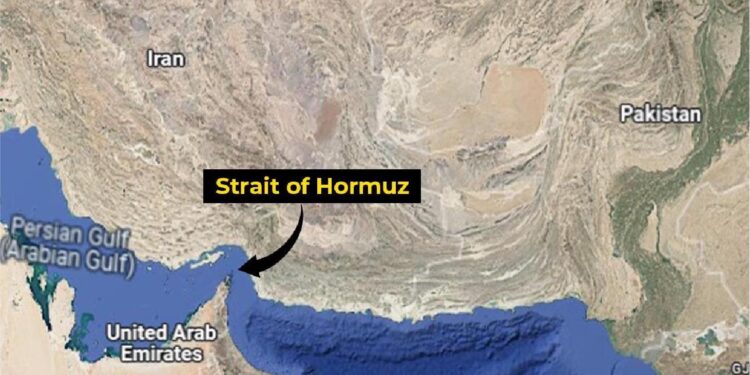The Strait of Hormuz, a crucial maritime chokepoint through which nearly a fifth of the world’s oil supply passes, stands increasingly at the center of geopolitical tensions amid rising hostilities between Israel and Iran. As the volatile conflict escalates, experts warn that this narrow passageway-linking the Persian Gulf to the Arabian Sea-remains highly vulnerable to disruption, with potentially profound impacts on global energy markets and international security. This article examines the strategic importance of the Strait of Hormuz and explores how the Israel-Iran conflict heightens the risk of instability in one of the world’s most vital oil transit routes.
Strait of Hormuz at the Crossroads of Geopolitical Tensions
The Strait of Hormuz, a narrow yet critical waterway, is the nexus through which nearly 20% of the world’s petroleum passes daily. Its strategic importance is underscored by its geographic location, wedged between Oman and Iran, making it a flashpoint in the escalating tensions between Israel and Iran. The confrontation between these two nations reverberates beyond conventional battle lines, threatening to disrupt an already fragile global energy market. With Iran’s capability to impose chokepoints or blockade this maritime corridor, the delicate balance of regional security is perpetually at risk.
Compounding this vulnerability is the complexity of the international military presence tasked with safeguarding the strait. Several global powers maintain patrols and naval fleets, creating a volatile environment where miscalculation could rapidly escalate. Key factors contributing to this precariousness include:
- Proxy conflicts: Iran-backed militias enhance asymmetric warfare potential near shipping lanes.
- Advanced missile systems: Iran’s deployment of coastal missile batteries threatens commercial and military vessels alike.
- Economic pressure: Sanctions and strategic embargoes raise stakes for Tehran’s political calculus.
| Factor | Implications | Stakeholders Involved |
|---|---|---|
| Military Presence | Heightened risk of naval skirmishes | US, UK, Iran, Israel |
| Oil Transit Volume | Economic vulnerability | Global Energy Consumers |
| Regional Alliances | Proxy warfare intensification | Iran, Hezbollah, Israel |
Strategic Importance and Vulnerabilities in Global Oil Supply
The Strait of Hormuz serves as a critical chokepoint through which nearly 20% of the world’s petroleum flows, linking the rich oil fields of the Persian Gulf with global markets. Its narrow passage, only about 21 miles wide at its tightest point, makes it especially susceptible to disruptions stemming from geopolitical tensions in the region. The ongoing friction between Israel and Iran adds a complex layer to these risks, as any escalation could threaten the already fragile security environment, prompting delays or blockades that send shockwaves through international energy prices.
Several vulnerabilities intensify the Strait’s strategic fragility:
- Military presence: Multiple navies patrol the waters, raising the chances of miscalculation or confrontation.
- Infrastructure target: Critical oil tankers and export terminals are prime targets for sabotage or missile strikes.
- Environmental hazards: A strategic conflict could lead to oil spills, devastating marine ecosystems and complicating recovery efforts.
| Parameter | Importance | Risk Factor |
|---|---|---|
| Oil Volume Transit | ~21 million barrels/day | High |
| Narrowest Width | 21 miles | Medium |
| Military Incidents (Recent 5 years) | 4 | High |
Diplomatic and Security Measures Needed to Safeguard Energy Flows
Ensuring uninterrupted energy supplies through the Strait of Hormuz demands a coordinated international effort that balances diplomatic engagement with robust security frameworks. Key stakeholders, including regional powers and global energy consumers, must prioritize open channels for dialogue to de-escalate rising tensions and prevent miscalculations. Proactive confidence-building measures, such as multilateral naval patrols and transparent information sharing, can diminish the risk of confrontations that might disrupt this critical artery.
Moreover, investment in technological upgrades and infrastructure resilience is essential. Key diplomatic and security actions include:
- Establishing a joint maritime security task force under the auspices of the United Nations or regional coalitions.
- Implementing real-time surveillance systems to monitor vessel movements and detect threats early.
- Promoting dialogue forums between Israel, Iran, and Gulf states to mitigate conflict triggers.
- Enhancing crisis communication protocols to avoid escalation from accidental incidents.
| Measure | Benefit | Involved Parties |
|---|---|---|
| Joint Naval Patrols | Deters armed provocations | Regional navies, International allies |
| Surveillance Networks | Enhanced threat detection | Energy companies, Coast guards |
| Conflict Dialogue Forums | Reduces misunderstandings | Israel, Iran, Gulf states |
| Crisis Communication | Avoids accidental escalations | Military commands, Diplomatic corps |
Concluding Remarks
As tensions persist between Israel and Iran, the strategic significance of the Strait of Hormuz underscores the heightened risks facing global energy markets. This narrow maritime corridor, through which a substantial portion of the world’s oil supply transits, remains susceptible to disruption amid escalating hostilities. Stakeholders and policymakers must closely monitor developments in the region, as any conflict spillover could have far-reaching implications for international security and economic stability.































